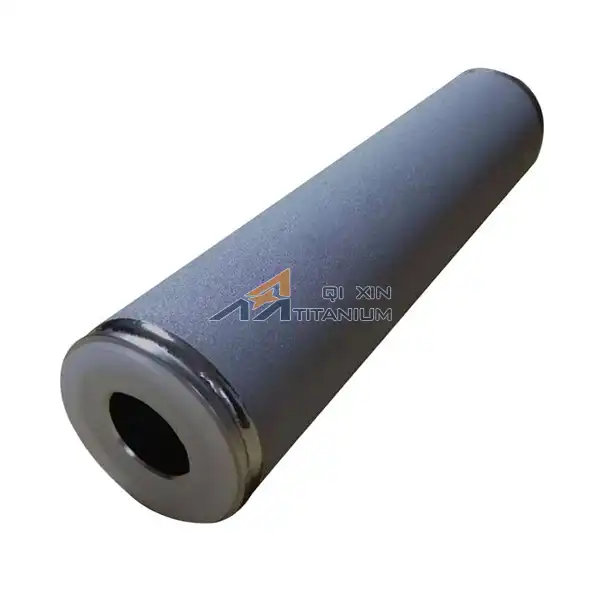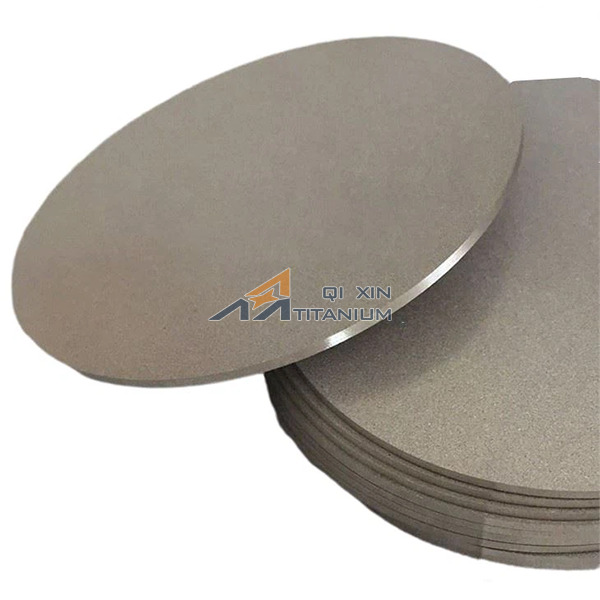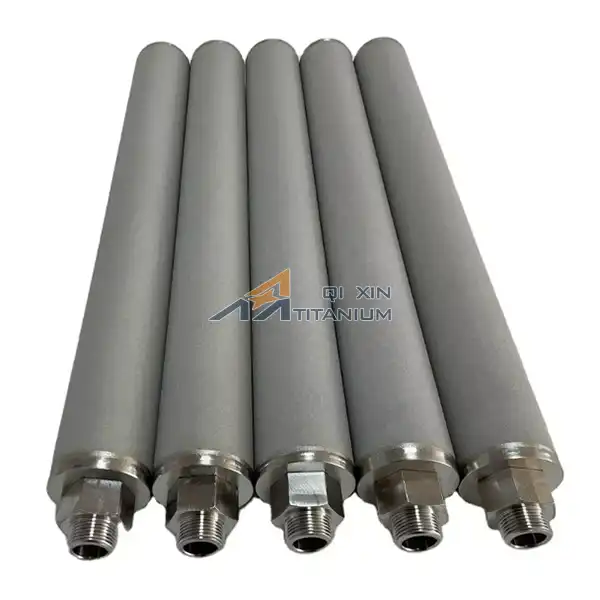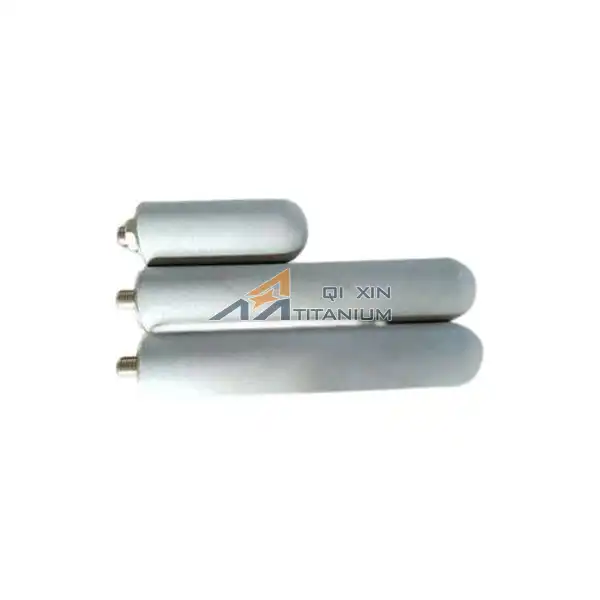Can Sintered Metal Powder Filter Cartridges be Customized?
2025-04-08 08:51:11
Sintered metal powder filter cartridges offer a high degree of customization to meet specific filtration needs across various industries. These versatile filtration components can be tailored in terms of materials, pore sizes, dimensions, and configurations to suit unique application requirements. Manufacturers can adjust the sintering process, powder composition, and cartridge design to achieve desired filtration characteristics such as flow rates, particle retention, and chemical resistance. This customization capability makes sintered metal powder filter cartridges an excellent choice for industries ranging from petrochemicals and pharmaceuticals to food and beverage processing, where precise filtration parameters are crucial for optimal performance and product quality.
Customization Options for Sintered Metal Powder Filter Cartridges
Material Selection
One of the primary areas of customization for sintered metal powder filter cartridges lies in material selection. Manufacturers can choose from a wide array of metal powders to create cartridges that excel in specific environments. Stainless steel, for instance, is a popular choice due to its corrosion resistance and durability. However, other materials such as bronze, nickel, titanium, or even exotic alloys can be utilized based on the application's demands.
The choice of material significantly impacts the filter's performance characteristics. For example, titanium-based cartridges offer exceptional resistance to harsh chemicals and high temperatures, making them ideal for aggressive industrial environments. Bronze filters, on the other hand, possess natural antimicrobial properties, rendering them suitable for applications in the food and beverage industry where bacterial growth is a concern.
Pore Size Customization
Another crucial aspect of customization is the ability to control pore size within the sintered metal matrix. By adjusting the sintering process parameters and the size distribution of the metal powder particles, manufacturers can achieve a wide range of pore sizes. This flexibility allows for the creation of filter cartridges with precise filtration ratings, from coarse particle removal to ultra-fine filtration capable of capturing sub-micron particles.
The customization of pore size distribution is particularly valuable in applications where specific particle retention is critical. For instance, in the pharmaceutical industry, where product purity is paramount, sintered metal powder filter cartridges can be engineered to remove contaminants down to exact size specifications, ensuring the integrity of the final product.
Dimensional Adaptability
Sintered metal powder filter cartridges can be customized in terms of their physical dimensions to fit various housing configurations and flow requirements. This includes adjusting the cartridge length, diameter, and wall thickness to optimize filtration performance and lifespan within the constraints of the filtration system.
Moreover, the end cap design and sealing mechanisms can be tailored to ensure proper fit and prevent bypass in specific filter housings. This dimensional flexibility allows for the creation of bespoke filtration solutions that seamlessly integrate into existing systems or novel designs, maximizing efficiency and minimizing the need for system modifications.
Advanced Customization Techniques for Enhanced Performance
Multi-Layer Filtration
Advanced customization techniques for sintered metal powder filter cartridges include the development of multi-layer filtration structures. By sintering layers of different pore sizes or even different materials, manufacturers can create gradient density filters. These sophisticated designs offer depth filtration capabilities, where larger particles are captured in the outer layers while finer particles are retained in the inner layers.
This multi-layer approach not only enhances filtration efficiency but also extends the cartridge's service life by distributing the particle load throughout the filter's depth. Such customization is particularly beneficial in applications with high solid content or where extended operational periods between filter changes are desired.
Surface Modification
Surface modification represents another frontier in the customization of sintered metal powder filter cartridges. Techniques such as electroplating, chemical etching, or the application of specialized coatings can alter the surface properties of the filter media. These modifications can enhance characteristics such as hydrophobicity, oleophobicity, or catalytic activity.
For example, a hydrophobic coating applied to a stainless steel sintered filter can improve its performance in gas-liquid separation applications. Similarly, catalytic coatings can transform a simple filter into a reactive surface, opening up possibilities for in-line chemical processing or contaminant neutralization during filtration.
Composite Structures
Innovative customization approaches include the development of composite sintered metal powder filter cartridges. These structures combine different materials or incorporate non-metallic components to achieve unique filtration properties. For instance, metal fibers or ceramic particles can be integrated into the sintered metal matrix to modify porosity, enhance strength, or introduce specific chemical affinities.
Composite structures allow for the fine-tuning of filtration characteristics that may not be achievable with a single material. This level of customization is particularly valuable in specialized applications such as molecular sieves or in environments where a combination of mechanical strength and chemical selectivity is required.
Customization Process and Considerations
Collaborative Design
The customization of sintered metal powder filter cartridges typically begins with a collaborative design process between the manufacturer and the end-user. This involves a thorough analysis of the filtration requirements, including the nature of the fluid to be filtered, particle size distribution, flow rates, and operating conditions such as temperature and pressure.
Engineers and filtration experts work closely with clients to translate these requirements into specific design parameters for the sintered metal powder filter cartridge. This may involve computer modeling and simulation to predict filter performance under various conditions, ensuring that the customized design meets or exceeds the application's demands.
Prototyping and Testing
Once a custom design is proposed, the next step often involves prototyping and rigorous testing. Manufacturers may produce small batches of the customized sintered metal powder filter cartridges for evaluation. These prototypes undergo extensive performance testing, which may include pressure drop analysis, particle retention efficiency measurements, and accelerated life cycle tests.
The testing phase is crucial for validating the custom design and making any necessary refinements. It also provides valuable data that can be used to predict the filter's performance in real-world applications, helping users optimize their filtration processes and maintenance schedules.
Scalability and Production Considerations
When customizing sintered metal powder filter cartridges, it's essential to consider the scalability of the design for production. While certain customization options may be feasible for small-scale or specialized applications, they might present challenges in large-scale manufacturing.
Manufacturers must balance the degree of customization with production efficiency and cost-effectiveness. This often involves optimizing the sintering process parameters, powder metallurgy techniques, and quality control measures to ensure consistent production of the customized filter cartridges at the required scale. Additionally, considerations such as material availability, lead times, and regulatory compliance must be factored into the customization process to ensure a sustainable and reliable supply chain for the customized products.
Conclusion
The customization potential of sintered metal powder filter cartridges is vast and continually expanding. From material selection and pore size control to advanced techniques like multi-layer filtration and surface modification, these versatile components can be tailored to meet the most demanding filtration challenges across industries. The collaborative design process, coupled with rigorous prototyping and testing, ensures that customized solutions perform optimally in their intended applications. As filtration requirements become increasingly specialized, the ability to customize sintered metal powder filter cartridges remains a key advantage, driving innovation and efficiency in filtration technology.
Contact Us
For more information about customized sintered metal powder filter cartridges or to discuss your specific filtration needs, please contact our expert team at Qixin Titanium Co., Ltd. We're committed to providing innovative filtration solutions tailored to your unique requirements. Reach out to us at info@mmo-anode.com to start your custom filtration journey today.
References
Smith, J.A. (2021). "Advances in Sintered Metal Filtration Technology," Journal of Industrial Filtration, 45(3), 210-225.
Zhang, L. et al. (2020). "Customization Techniques for Sintered Metal Filters in High-Purity Applications," Chemical Engineering Progress, 116(8), 34-42.
Brown, R.D. (2019). "Material Selection for Sintered Metal Powder Filters in Corrosive Environments," Corrosion Science and Technology, 54(2), 178-190.
Patel, S. and Johnson, M. (2022). "Multi-Layer Sintered Metal Filters: Design and Performance Analysis," Powder Technology, 396, 468-480.
Lee, K.W. (2020). "Surface Modification of Sintered Metal Filters for Enhanced Separation Efficiency," Separation and Purification Technology, 250, 117252.
Nakamura, H. et al. (2021). "Composite Sintered Metal Powder Filters: A New Frontier in Customized Filtration," Advanced Materials and Processes, 179(5), 22-28.
Send Inquiry
Related Industry Knowledge
- What is the filtration rating of metal sintered filters?
- Can Sintered Metal Powder Filters Be Customized?
- What Are the Optimal Operating Parameters for Iridium Coated Titanium Plate Anodes?
- What Factors Should be Considered When Selecting a Sintered Metal Powder Filter?
- How Titanium MMO Anodes Improve Efficiency in Electrowinning Processes?
- Custom Sizes and Shapes: Sintered Metal Filter Discs for Unique Requirements
- Cost-Effectiveness of MMO Coated Titanium Strip Electrodes in Long-Term Water Treatment Operations
- How Does an Iridium Coated Titanium Plate Anode Work?
- Sintered Porous Metal Filter Element Cleaning and Maintenance
- Why Reliable DSA Titanium Electrodes Outperform Traditional Anodes in Industrial Electrolysis?





